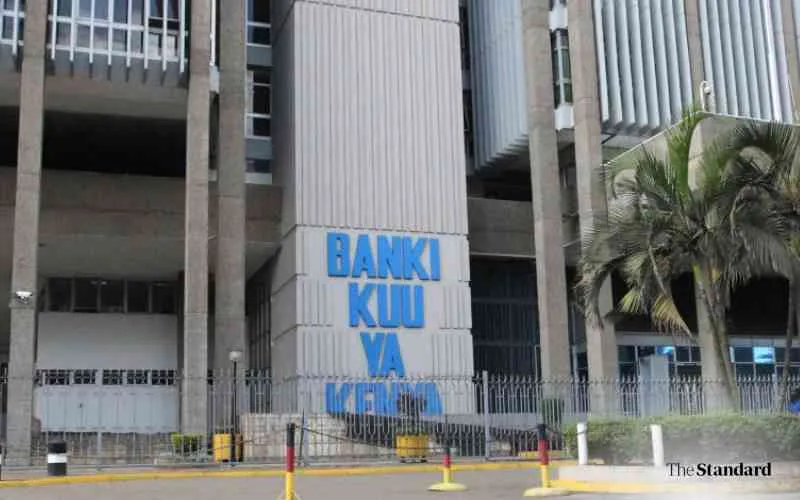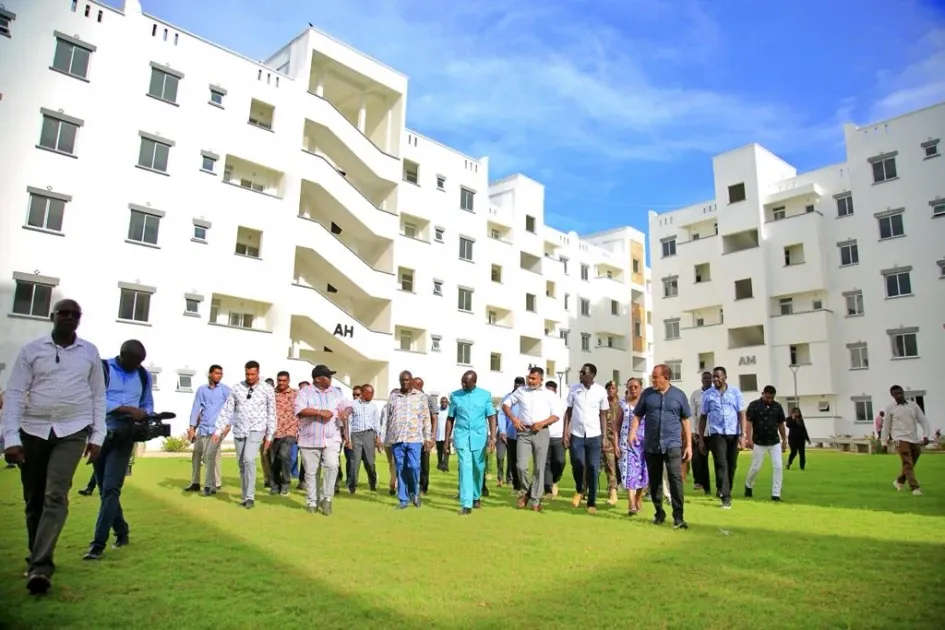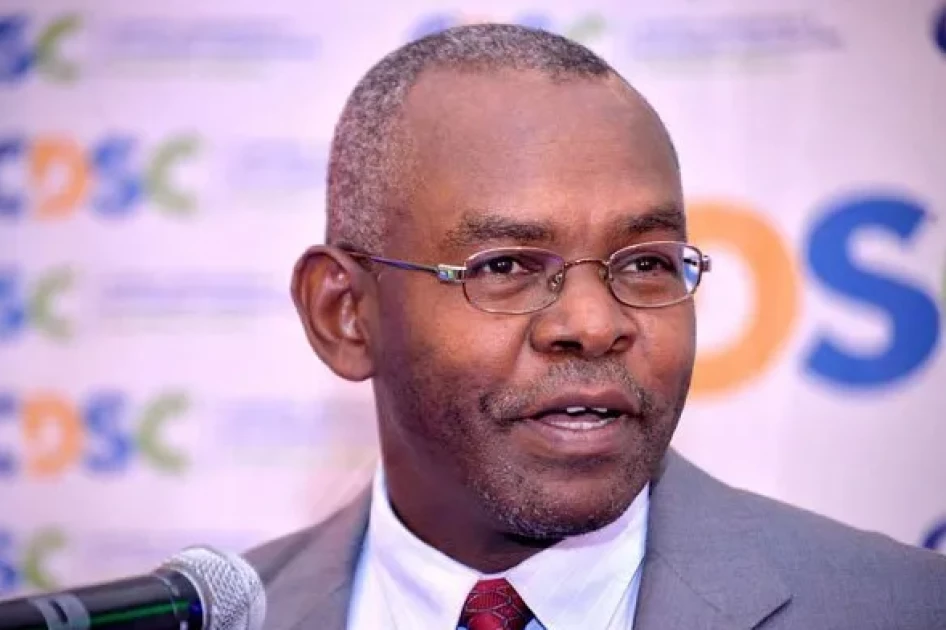The Central Bank of Kenya (CBK), in a bid to rejuvenate lending activities and bolster economic momentum amid subdued credit growth, has reduced its benchmark lending rate by 75 basis points, bringing it down to 10.00 percent. The decision, delivered during Monday’s Monetary Policy Committee (MPC) meeting, comes amid a backdrop of easing inflation, a stable exchange rate, and ongoing efforts to support private sector lending in the wake of persistent economic headwinds.
CBK Governor and MPC Chairman Dr. Kamau Thugge explained that the revision in monetary policy was driven by a combination of favorable macroeconomic indicators and a deliberate strategy to stimulate economic activity. “The Committee concluded that there was scope for a further easing of the monetary policy stance to stimulate lending by banks to the private sector and support economic activity,” Dr. Thugge remarked in an official statement.
A Detailed Look at the Monetary Policy Decision
Easing Inflation and a Stable Exchange Rate
The recent policy adjustment is underpinned by positive developments in Kenya’s inflation trends. According to MPC data, overall inflation in March was recorded at 3.6 percent—well within the CBK’s targeted range of 2.5 to 5 percent. The decline was driven primarily by lower food and energy prices, with non-core inflation easing further to 7.4 percent from previous months. Core inflation, which excludes volatile food and energy components, held steady at 2.2 percent, indicating that underlying price pressures remain controlled.
A stable exchange rate has also played a crucial role in the CBK’s decision-making process. The Kenyan Shilling has shown signs of appreciation recently, contributing to improved import cover and reducing the cost pressures on imported goods. With the CBK’s foreign exchange reserves standing at $9.93 billion—equivalent to 4.44 months of import cover—the central bank is confident in its ability to buffer against external shocks.
Stimulating Private Sector Lending
One of the primary objectives of lowering the benchmark rate is to encourage banks to extend more credit to the private sector. Recent data shows that private sector credit grew marginally by 0.2 percent in March, reversing a contraction of 1.3 percent in February. This small uptick, alongside a decline in average commercial lending rates from 17.2 percent in November 2024 to 15.8 percent in March, highlights initial positive responses in the lending landscape.
The central bank believes that by lowering the cost of borrowing, private businesses—from large corporations to small and medium enterprises (SMEs)—will be more inclined to take on debt for investment and expansion purposes. This, in turn, is expected to stimulate further economic activity, drive employment, and ultimately generate higher GDP growth. Recent revisions in economic forecasts suggest that, despite a slowdown from 5.6 percent in 2023 to 4.6 percent in 2024, Kenya’s economy is projected to rebound to around 5.4 percent in 2025, bolstered by sectors such as agriculture, services, and manufacturing.
Historical Context and the Broader Monetary Policy Shift
This rate cut is significant not only as a response to current economic conditions but also because it represents a shift in the CBK’s monetary policy stance—from “neutral” to “accommodative.” For many years, the central bank maintained a cautious approach due to fluctuating inflation and external vulnerabilities. However, the current decision reflects a growing confidence in the domestic economy’s resilience and the effectiveness of previous policy measures. Since the last comparable rate adjustment in May 2020, the Kenyan economy has weathered both global and local disruptions, positioning the CBK to adopt a more proactive stance in supporting economic recovery.
The accommodative stance signals to markets that further rate cuts are on the table, particularly if global conditions continue to deteriorate or if domestic growth lags behind projections. Market participants have already started to incorporate these policy signals into their outlook, with improved expectations of credit flow and business activity over the next 12 months.
Economic Performance and Future Outlook
The Current Economic Environment
The decision to cut the lending rate comes at a time when the Kenyan economy faces a mix of challenges and opportunities. According to revised balance of payments data released by the Kenya National Bureau of Statistics (KNBS), the current account deficit narrowed to 3.1 percent of GDP in the 12 months leading up to February 2025. This improvement was underpinned by robust growth in goods exports—up 13.1 percent—and an increase in diaspora remittances by 14.5 percent. These factors, combined with favorable weather and improved macroeconomic stability, have contributed to an overall more stable economic environment.
However, challenges remain. The economic slowdown witnessed in 2024, which saw a decline in growth from 5.6 percent to 4.6 percent, has raised concerns about persistent weakness in consumer demand and the challenges posed by high operating costs. Despite these headwinds, surveys conducted by the CBK in March revealed that optimism among CEOs and market participants is on the rise, with expectations of improved business activity over the next 12 months.
Growth Prospects and Sectoral Impact
Several key sectors are expected to drive Kenya’s rebound in 2025. The agricultural sector, long considered the backbone of the Kenyan economy, is poised to benefit from improved access to credit as well as favorable weather conditions. Additionally, the services sector—bolstered by increased tourism, technology investments, and urbanization—continues to expand, providing crucial employment opportunities for a rapidly growing population.
Manufacturing is also anticipated to play a significant role in the recovery. With global supply chains slowly normalizing and domestic companies gradually shifting back to local production, there is potential for a boost in industrial output. Private sector investments, especially in technology-driven and export-oriented industries, are expected to further enhance overall productivity and competitiveness.
Moreover, the financial sector itself is showing signs of robust health. Despite a slight uptick in the gross non-performing loans (NPL) ratio—from 16.4 percent in December 2024 to 17.2 percent in February 2025—the banking sector remains stable, buoyed by strong liquidity and well-capitalized institutions. The improvements in credit growth, as well as the reduction in average commercial lending rates, are likely to contribute to enhanced financial intermediation, which is critical for long-term economic growth.
Policy Implications and International Perspectives
Role of Monetary Policy in an Integrated Global Environment
Globally, central banks have been navigating a landscape marked by inflationary pressures, geopolitical tensions, and uncertain trade dynamics. In this context, the CBK’s decision to adopt an accommodative stance aligns with global trends wherein central banks are seeking to balance the need for economic stimulus with the risks of overheating economies. While many developed economies have been more cautious—given the challenges of inflation—the CBK’s readiness to further ease monetary conditions is a reflection of Kenya’s unique economic dynamics and its immediate need for economic stimulus.
International observers note that emerging markets like Kenya face a dual challenge: mitigating external shocks while ensuring robust domestic growth. The CBK’s proactive measures, including the rate cut and the recalibration of its policy stance, signal its readiness to act as a stabilizing force. Analysts from institutions such as the International Monetary Fund (IMF) and the World Bank have observed that central banks in developing economies often need to take decisive measures to address both supply-side constraints and demand-side deficiencies.
Global Trade and Investor Confidence
The decision by the CBK has further implications for investor confidence—both local and foreign. A lower lending rate reduces the cost of capital, making it more attractive for businesses to invest in expansion and innovation. Moreover, by fostering a supportive monetary environment, the central bank is helping to create an ecosystem where foreign direct investments (FDI) can flourish.
The stability of the Kenyan Shilling and the healthy level of foreign exchange reserves provide an additional buffer against external shocks, reassuring investors that the country’s macroeconomic fundamentals remain robust. This confidence is crucial in attracting the capital needed to further develop key sectors of the economy, including manufacturing, technology, and renewable energy.
Perspectives from Stakeholders
Voices from the Government and Policy-Makers
Government officials have welcomed the CBK’s decision, emphasizing that the rate cut is part of a broader strategy to enhance economic growth and job creation. The Ministry of Finance has underscored that by lowering borrowing costs, the government aims to spur private sector investment, which in turn will lead to more sustainable economic development. In recent policy discussions, officials have highlighted the importance of maintaining a balanced approach—one that supports growth while keeping inflation in check.
Views from the Private Sector and Business Leaders
Business leaders, particularly from the SME sector, have expressed cautious optimism about the implications of the rate cut. Many entrepreneurs have long complained about the high cost of credit, which has hampered expansion efforts. With lending rates decreasing, there is a renewed hope that businesses will have the capital needed to invest in new technologies, upgrade infrastructure, and create jobs.
A senior executive at a prominent manufacturing firm commented, “This decision by the CBK is timely. Lowering the lending rate will ease the burden on companies that are trying to innovate and expand. It also signals that the central bank is focused on supporting growth in the private sector, which is vital for our country’s economic future.”
Similarly, representatives from Kenya’s agricultural sector have noted that improved credit accessibility will allow farmers to purchase modern equipment, invest in better storage facilities, and ultimately increase output. Given that agriculture remains a significant employer in rural areas, the potential for improved financial conditions is seen as a critical driver of inclusive growth.
Feedback from the Financial Community
Financial analysts and economists have generally praised the CBK’s move, even as they caution that the effectiveness of such measures depends on broader economic conditions. Upasna Bhardwaj, chief economist at Kotak Mahindra Bank, pointed out that the gradual improvement in private sector credit growth—evident from the reversal of a contraction in February—suggests that the policy measures are beginning to work. “The accommodative stance not only lowers the cost of borrowing but also boosts consumer and investor confidence. We anticipate further rate cuts if global economic conditions dictate,” Bhardwaj noted.
Market analysts are also watching the banking sector closely. Despite the modest rise in non-performing loans, overall liquidity remains strong, and many banks are expected to benefit from increased lending activity as more businesses take advantage of lower interest rates.
Broader Economic Themes and Future Challenges
Balancing Growth with Sustainability
While the CBK’s accommodative measures are designed to stimulate growth, policy-makers remain mindful of the need to balance short-term stimulus with long-term economic sustainability. One of the key challenges is to ensure that increased credit does not lead to overheating in certain sectors or contribute to asset bubbles. The central bank has made it clear that its policy stance is flexible and will be adjusted as conditions evolve—suggesting that future rate cuts or hikes will depend on a careful assessment of inflation trends, credit growth, and economic performance.
Addressing Structural Inefficiencies
Beyond monetary policy, the broader task of spurring economic growth in Kenya involves addressing structural inefficiencies across various sectors. The government and the CBK are expected to work closely with industry leaders, trade unions, and international partners to implement reforms that improve productivity, enhance infrastructure, and foster innovation. Initiatives aimed at reducing the cost of doing business—such as infrastructure upgrades, regulatory simplification, and targeted support for emerging industries—are likely to complement the current monetary measures.
Preparing for Global Economic Uncertainty
The global economy remains fraught with uncertainties—from persistent trade tensions and geopolitical risks to potential fluctuations in commodity prices that could impact Kenya’s export-driven sectors. While the CBK’s current policies are designed to cushion the domestic economy against external shocks, ongoing vigilance is essential. International organizations such as the IMF have warned that emerging markets must remain agile in their policy responses, particularly as global economic conditions continue to evolve. For Kenya, this means maintaining a robust policy framework that can quickly adapt to both external and internal challenges.
Conclusion: A Decisive Step Towards Revitalized Growth
The recent reduction in Kenya’s benchmark lending rate to 10.00 percent marks a decisive step in the nation’s quest to reinvigorate its economy. By adopting an accommodative monetary policy stance, the CBK is not only responding to favorable economic indicators such as easing inflation and stable exchange rates, but also taking proactive measures to stimulate lending and support private sector growth. As Kenya navigates a challenging economic landscape, this policy move is expected to provide the necessary stimulus for boosting credit growth, fostering business investment, and ultimately driving broader economic recovery.
The rate cut is significant on multiple fronts. It offers relief to businesses that have long contended with high borrowing costs, enhances consumer confidence, and provides a clear signal that the central bank is committed to supporting the economy amid global uncertainties. While challenges such as weak consumer demand and high operating costs persist, the improved outlook among CEOs and market participants, coupled with positive indicators in export performance and remittance inflows, paints a cautiously optimistic picture for the future.
As Kenya continues on its path to recovery—supported by robust policy measures, diversified growth strategies, and strengthened international cooperation—the recent decision by the CBK stands as a testament to the nation’s resilience and adaptability. In an era defined by rapid economic shifts and geopolitical uncertainties, the central bank’s proactive approach to stimulating lending and invigorating the economy is a crucial pillar of Kenya’s broader development agenda.
Ultimately, the accommodative monetary policy not only lays the groundwork for immediate economic stimulation but also sets the stage for a more dynamic and sustainable growth trajectory over the coming years. By ensuring that capital flows more freely to the private sector and that businesses have the access to funding they need, the CBK is helping to create a more inclusive and resilient economic landscape—one in which all stakeholders can benefit from the fruits of renewed growth and innovation.
In summary, while the challenges ahead remain significant, the CBK’s recent policy decision underscores a proactive, human-centred approach to economic management. It is a call to action for businesses, policymakers, and communities to work together towards a future where growth is not only restored but also shared, paving the way for a stronger, more prosperous Kenya.
Ready to take your career to the next level? Join our dynamic courses: ACCA, HESI A2, ATI TEAS 7 , HESI EXIT , NCLEX – RN and NCLEX – PN, Financial Literacy!🌟 Dive into a world of opportunities and empower yourself for success. Explore more at Serrari Ed and start your exciting journey today! ✨
photo source: Google
By: Montel Kamau
Serrari Financial Analyst
9th April, 2025
Article, Financial and News Disclaimer
The Value of a Financial Advisor
While this article offers valuable insights, it is essential to recognize that personal finance can be highly complex and unique to each individual. A financial advisor provides professional expertise and personalized guidance to help you make well-informed decisions tailored to your specific circumstances and goals.
Beyond offering knowledge, a financial advisor serves as a trusted partner to help you stay disciplined, avoid common pitfalls, and remain focused on your long-term objectives. Their perspective and experience can complement your own efforts, enhancing your financial well-being and ensuring a more confident approach to managing your finances.
Disclaimer: This article is for informational purposes only and does not constitute financial advice. Readers are encouraged to consult a licensed financial advisor to obtain guidance specific to their financial situation.
Article and News Disclaimer
The information provided on www.serrarigroup.com is for general informational purposes only. While we strive to keep the information up to date and accurate, we make no representations or warranties of any kind, express or implied, about the completeness, accuracy, reliability, suitability, or availability with respect to the website or the information, products, services, or related graphics contained on the website for any purpose. Any reliance you place on such information is therefore strictly at your own risk.
www.serrarigroup.com is not responsible for any errors or omissions, or for the results obtained from the use of this information. All information on the website is provided on an as-is basis, with no guarantee of completeness, accuracy, timeliness, or of the results obtained from the use of this information, and without warranty of any kind, express or implied, including but not limited to warranties of performance, merchantability, and fitness for a particular purpose.
In no event will www.serrarigroup.com be liable to you or anyone else for any decision made or action taken in reliance on the information provided on the website or for any consequential, special, or similar damages, even if advised of the possibility of such damages.
The articles, news, and information presented on www.serrarigroup.com reflect the opinions of the respective authors and contributors and do not necessarily represent the views of the website or its management. Any views or opinions expressed are solely those of the individual authors and do not represent the website's views or opinions as a whole.
The content on www.serrarigroup.com may include links to external websites, which are provided for convenience and informational purposes only. We have no control over the nature, content, and availability of those sites. The inclusion of any links does not necessarily imply a recommendation or endorsement of the views expressed within them.
Every effort is made to keep the website up and running smoothly. However, www.serrarigroup.com takes no responsibility for, and will not be liable for, the website being temporarily unavailable due to technical issues beyond our control.
Please note that laws, regulations, and information can change rapidly, and we advise you to conduct further research and seek professional advice when necessary.
By using www.serrarigroup.com, you agree to this disclaimer and its terms. If you do not agree with this disclaimer, please do not use the website.
www.serrarigroup.com, reserves the right to update, modify, or remove any part of this disclaimer without prior notice. It is your responsibility to review this disclaimer periodically for changes.
Serrari Group 2025












